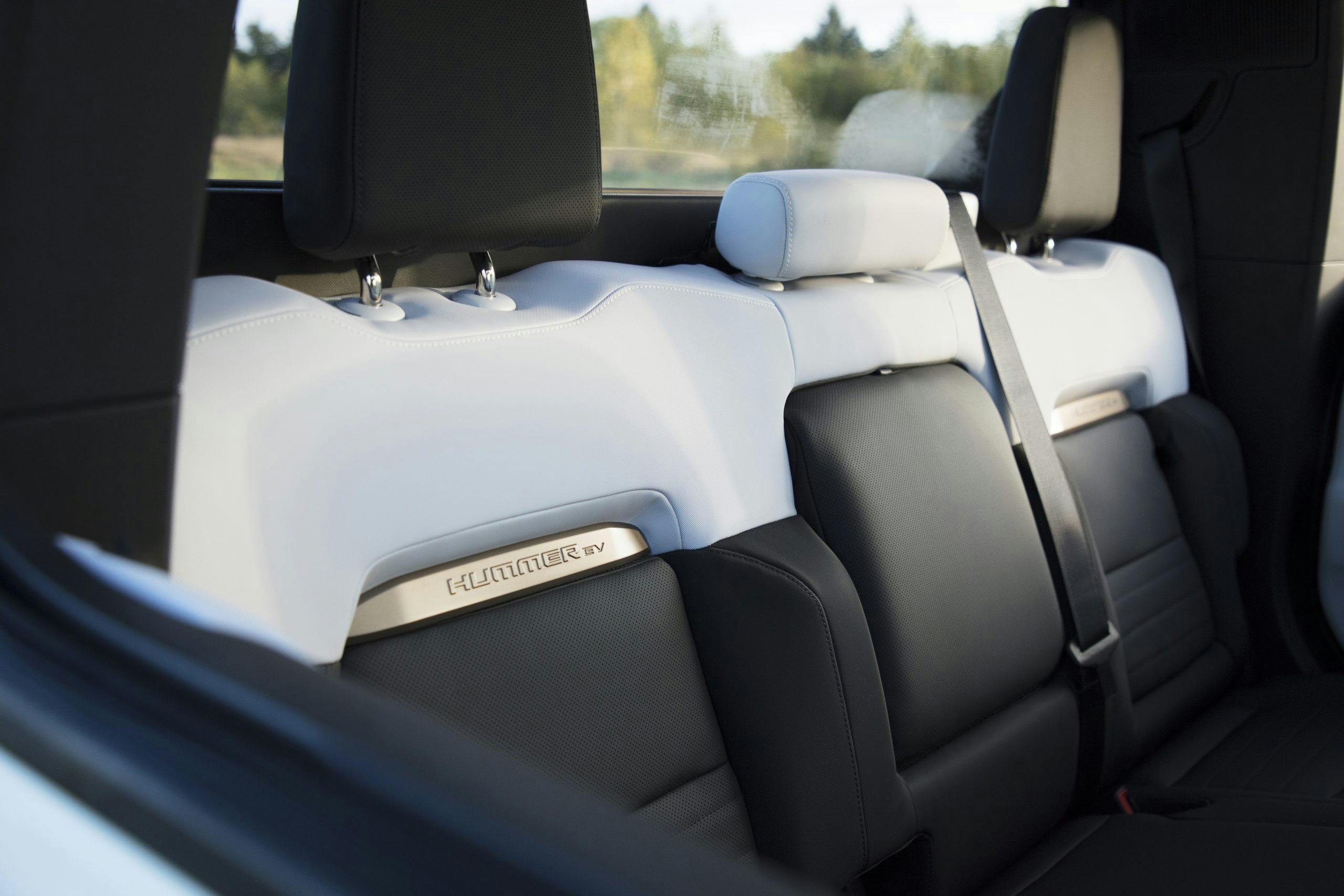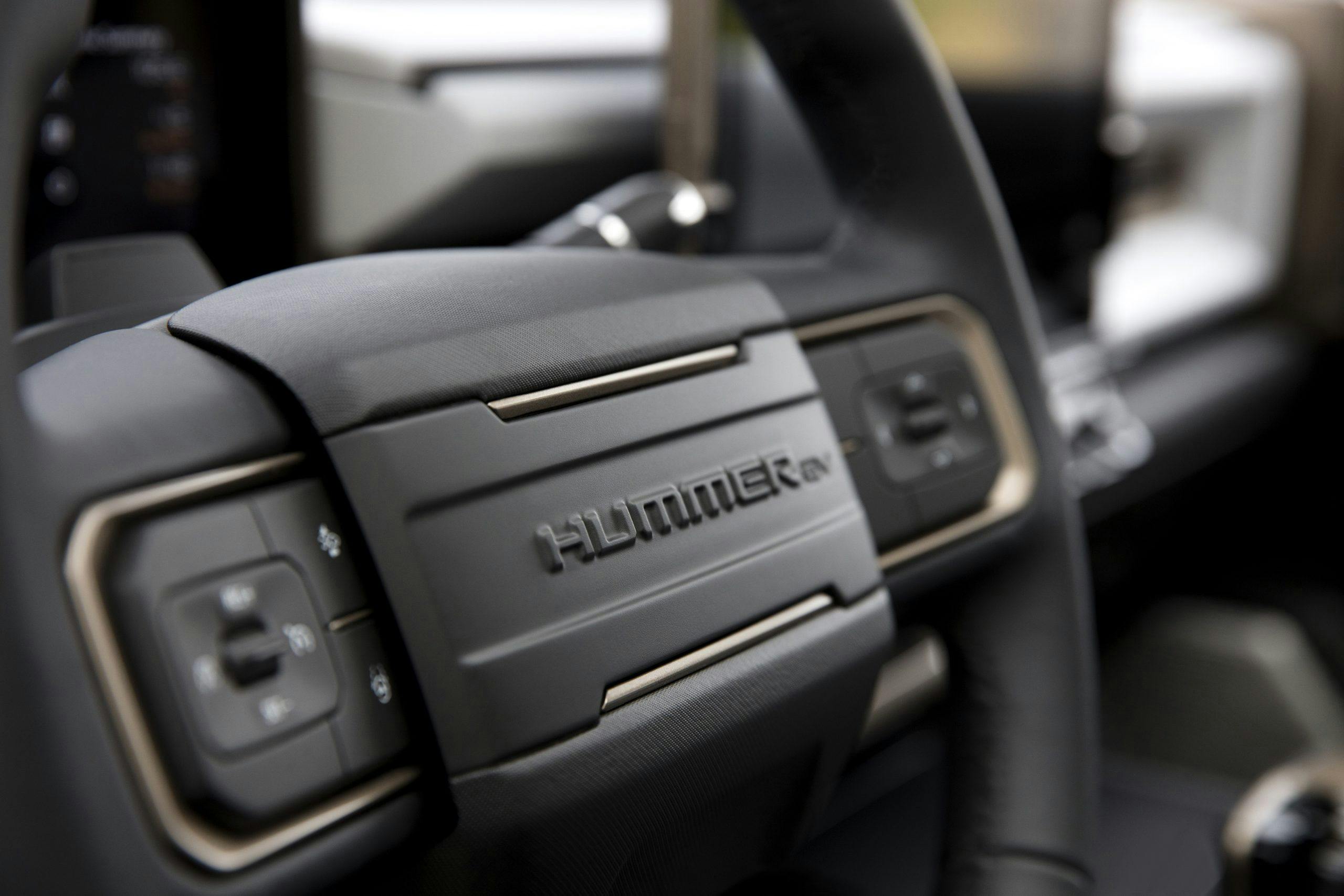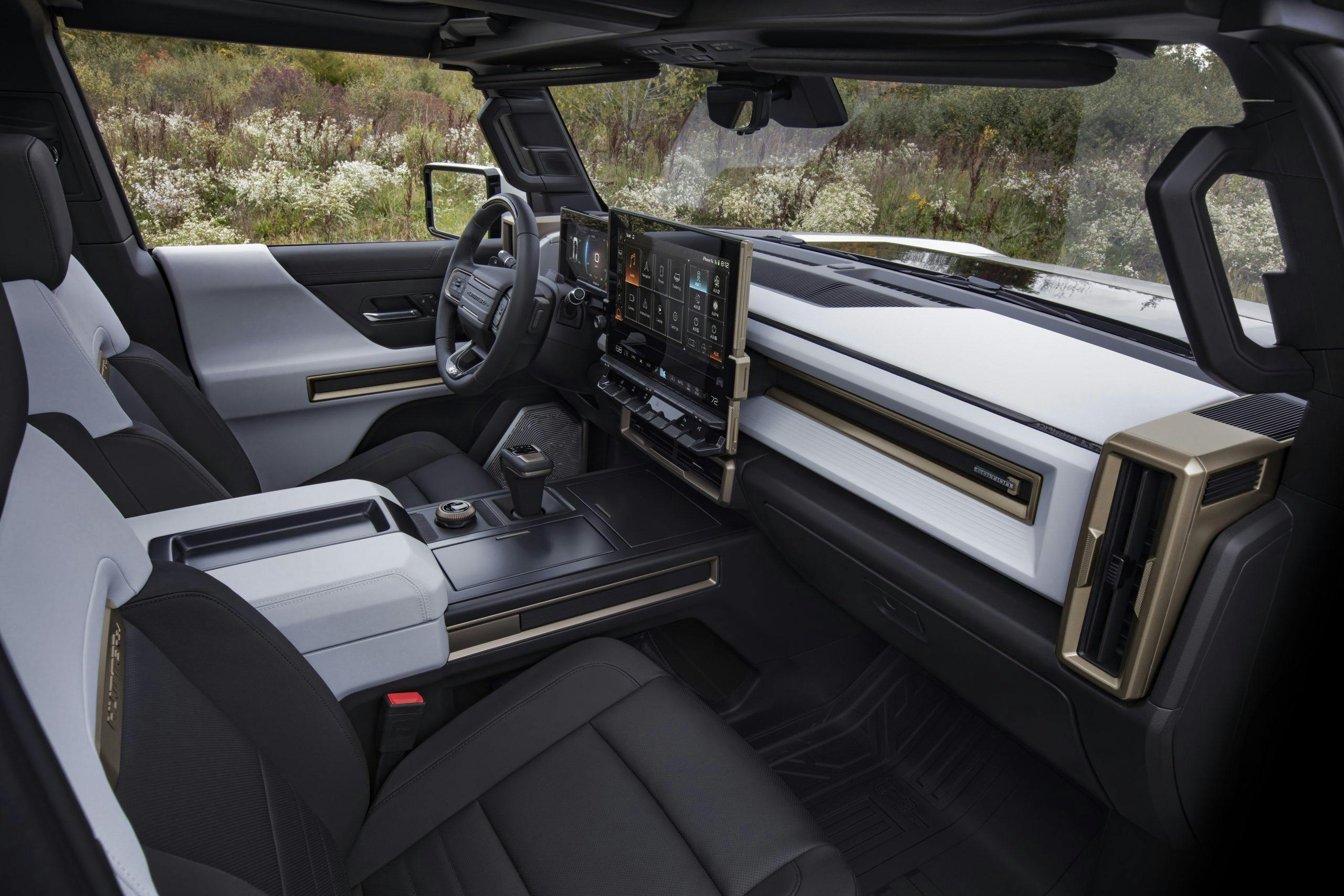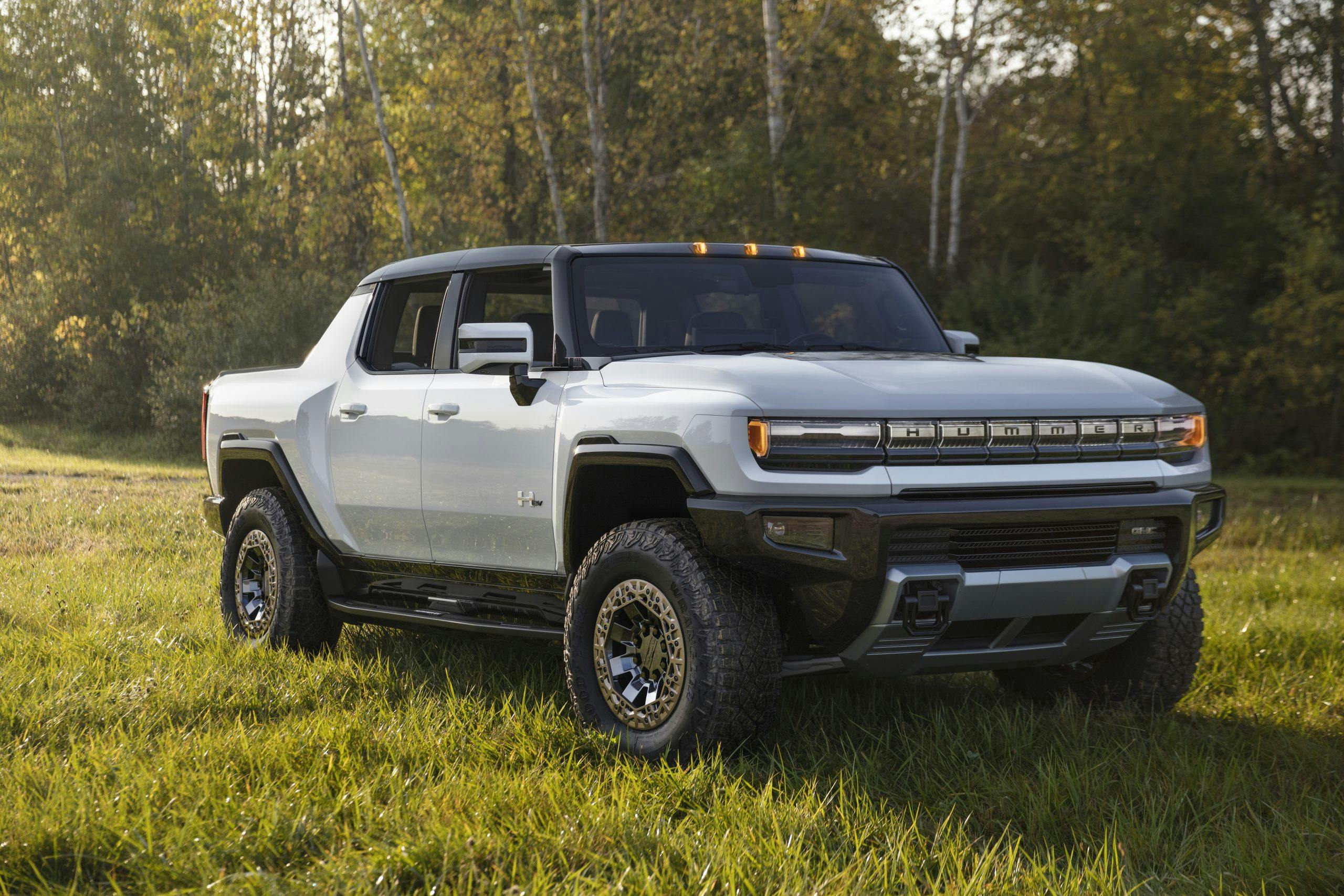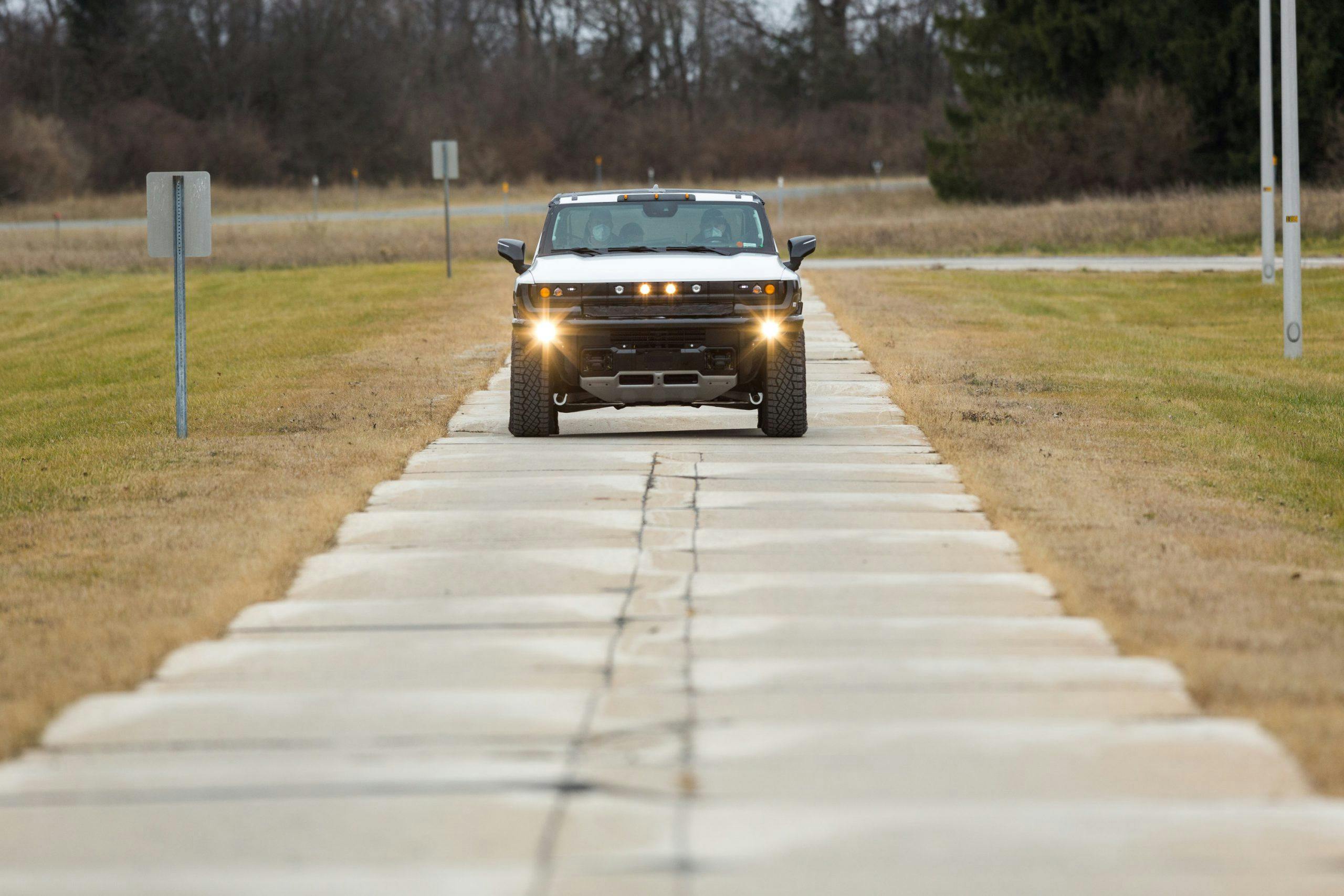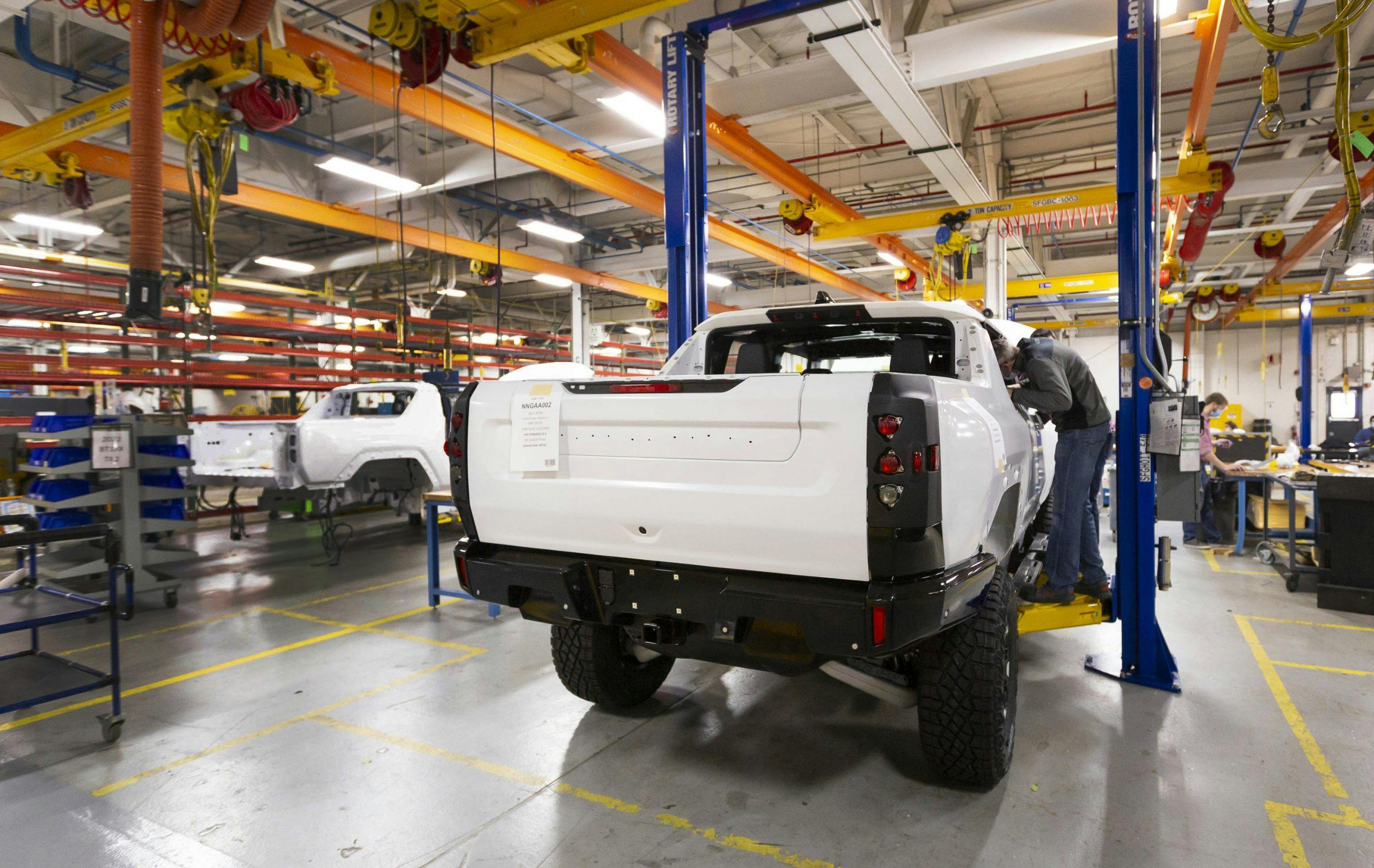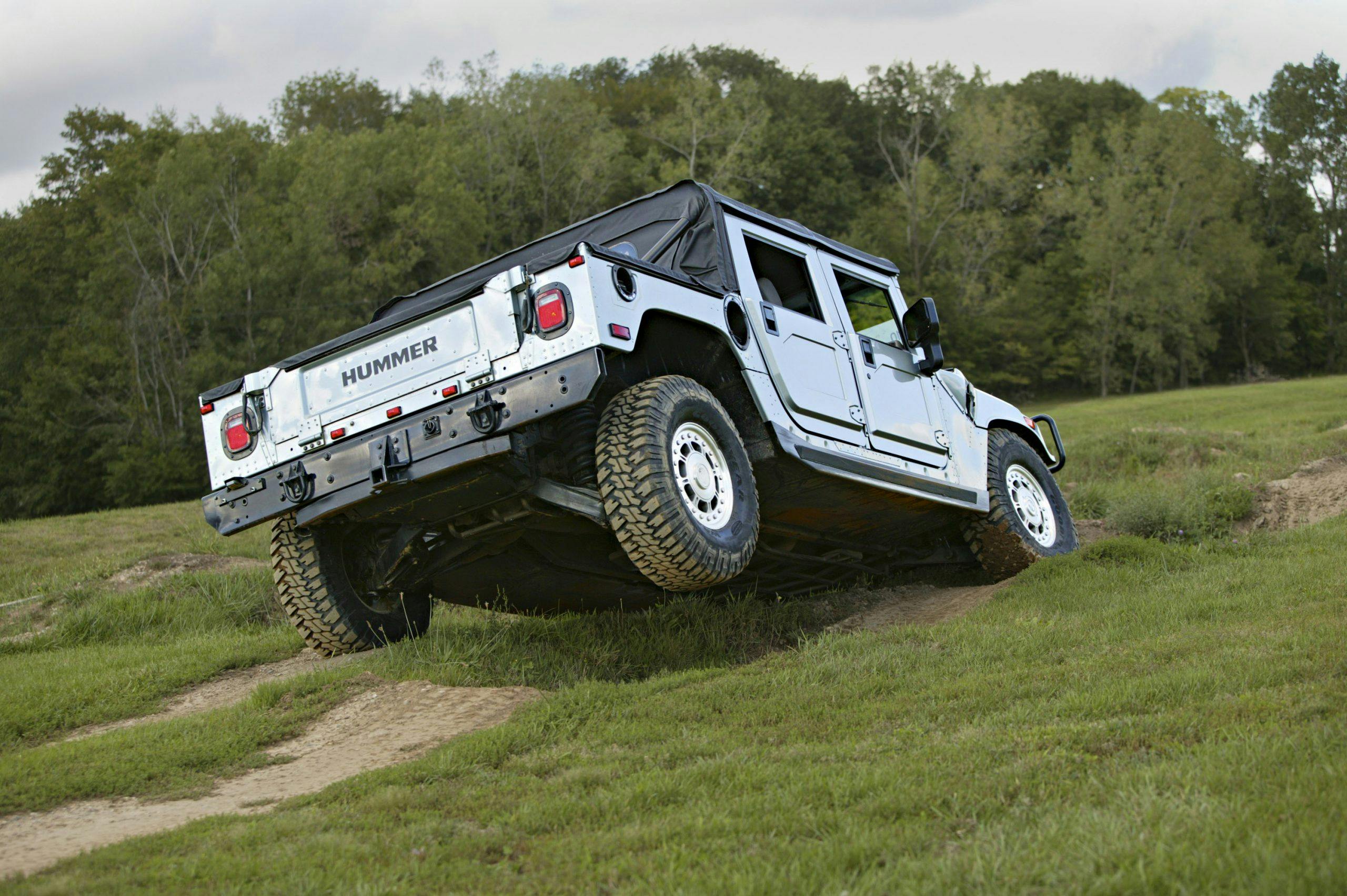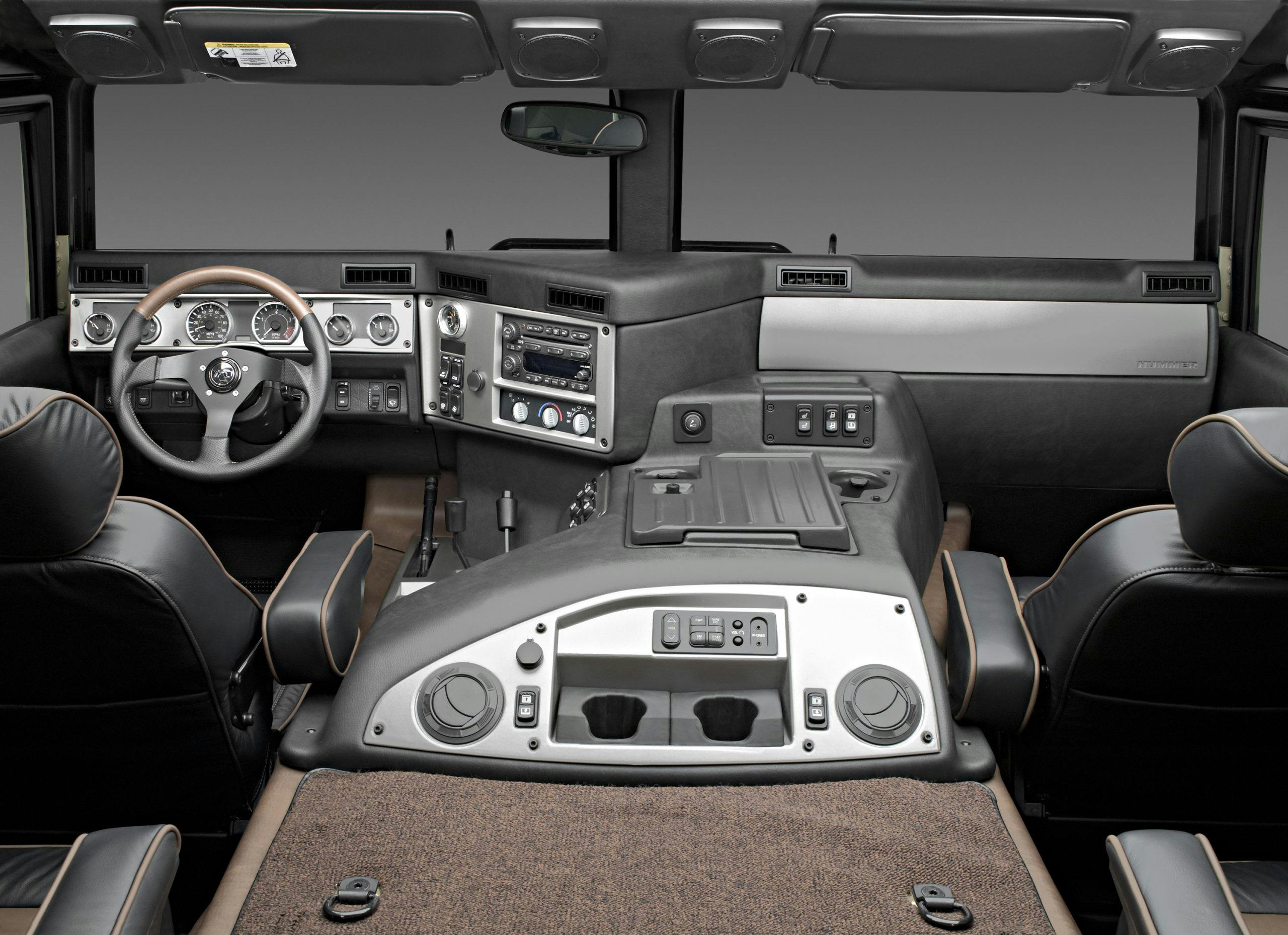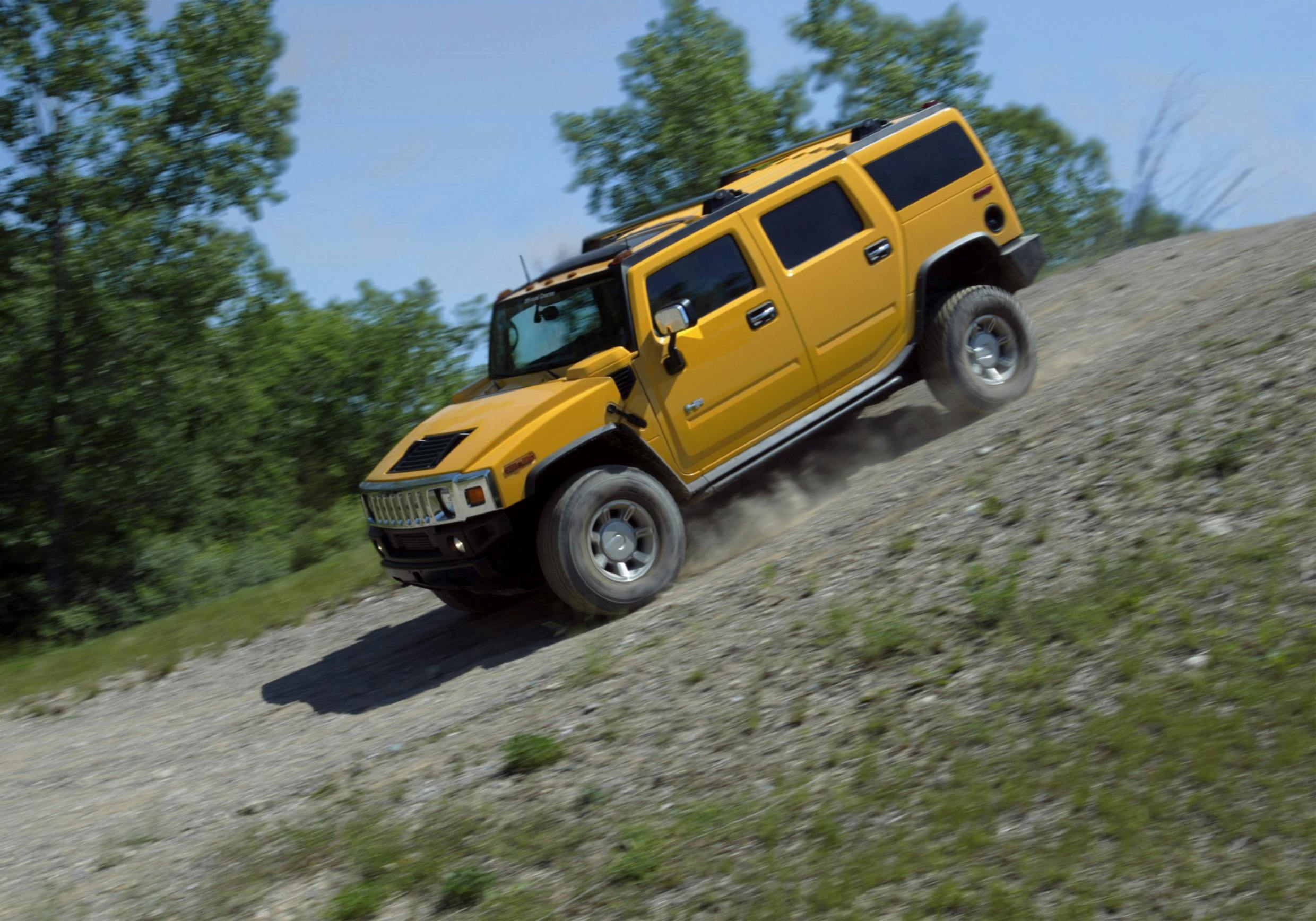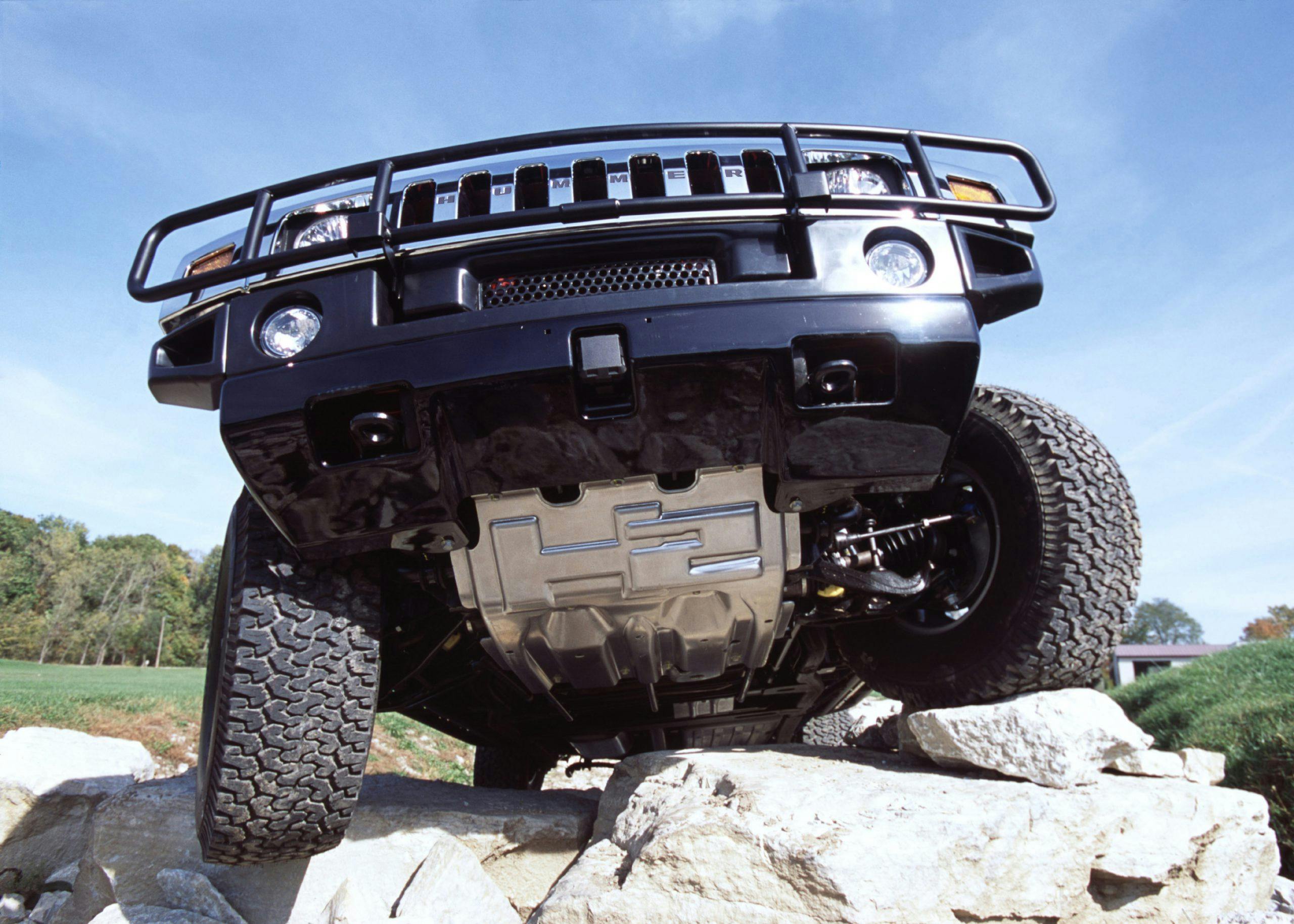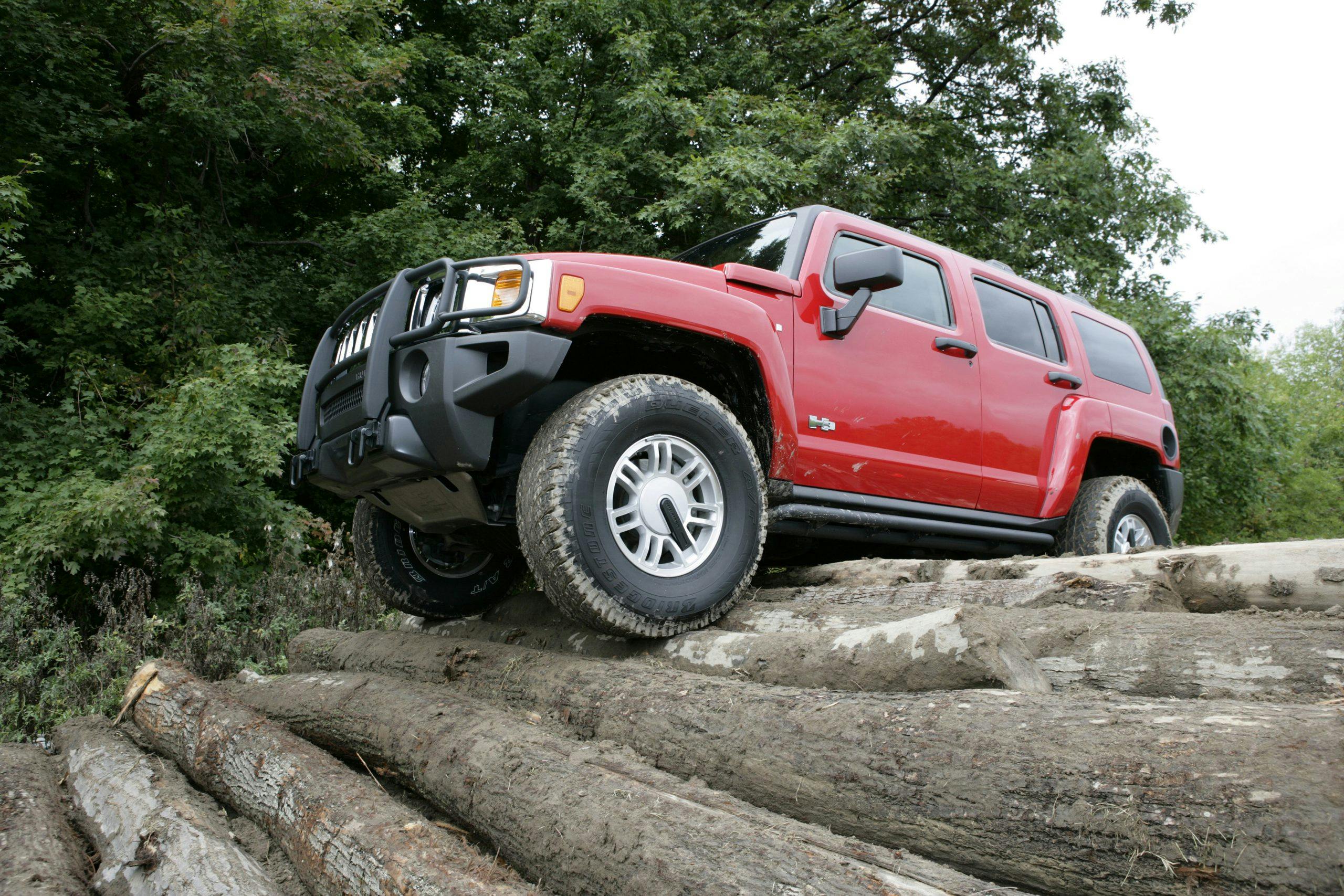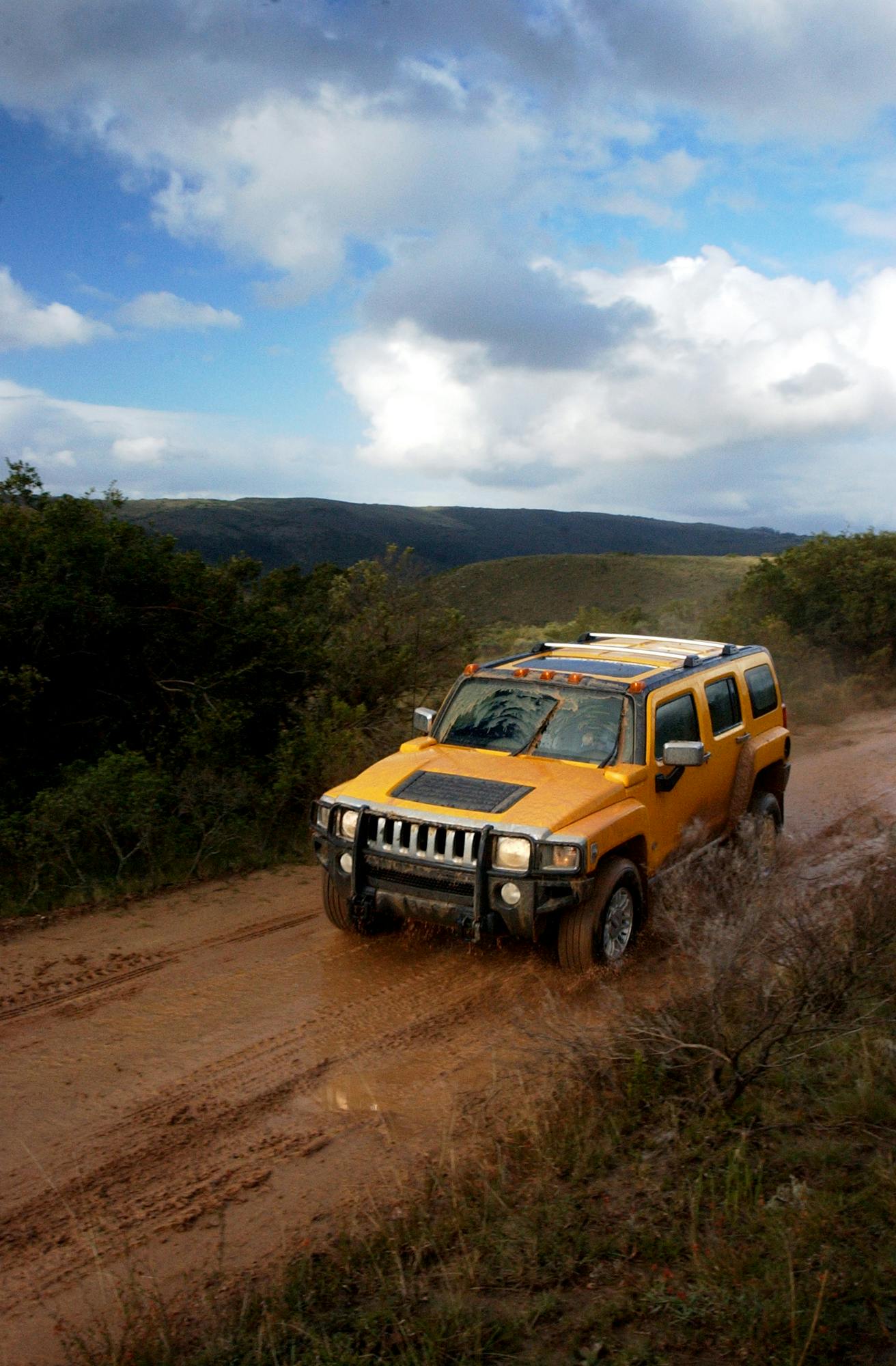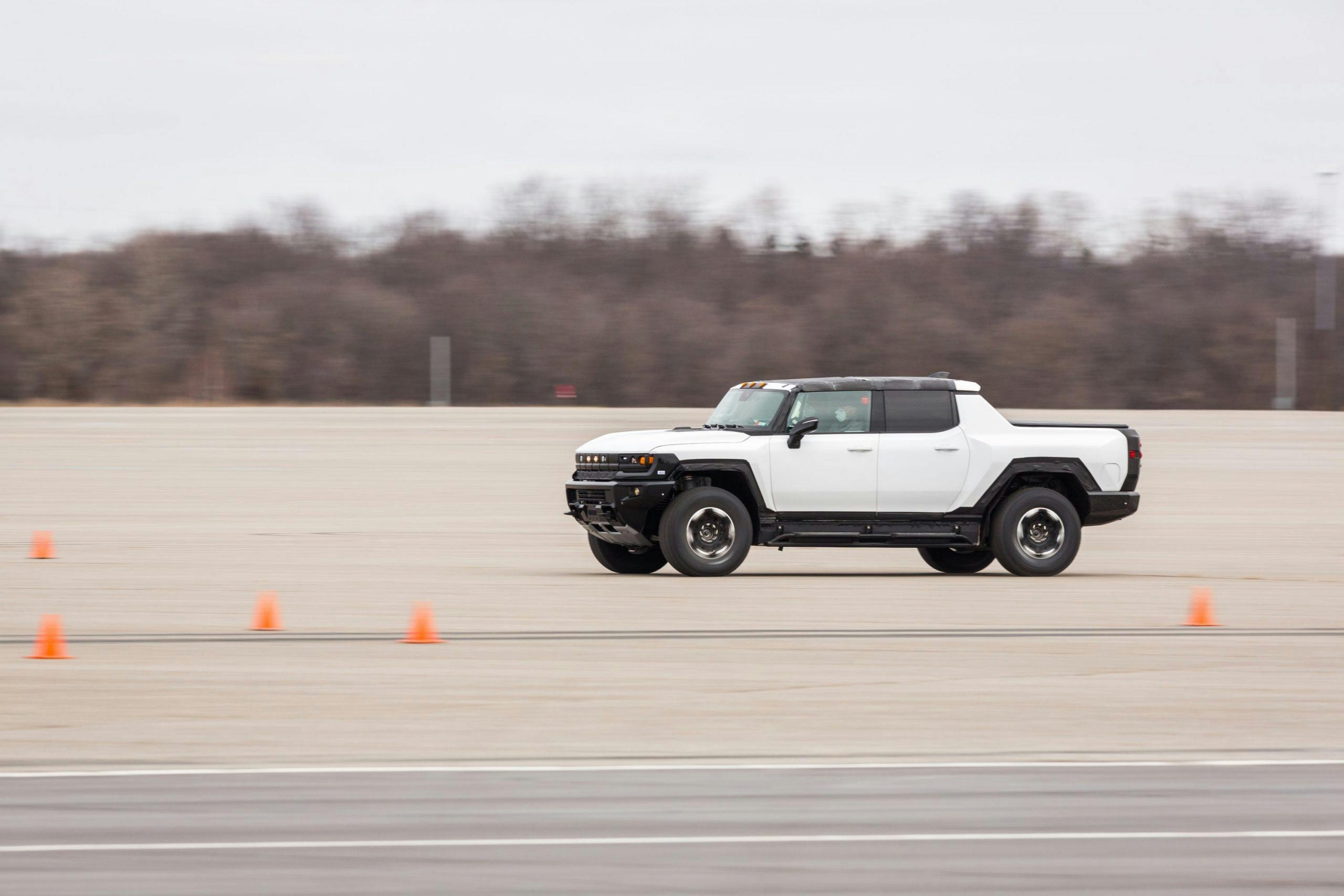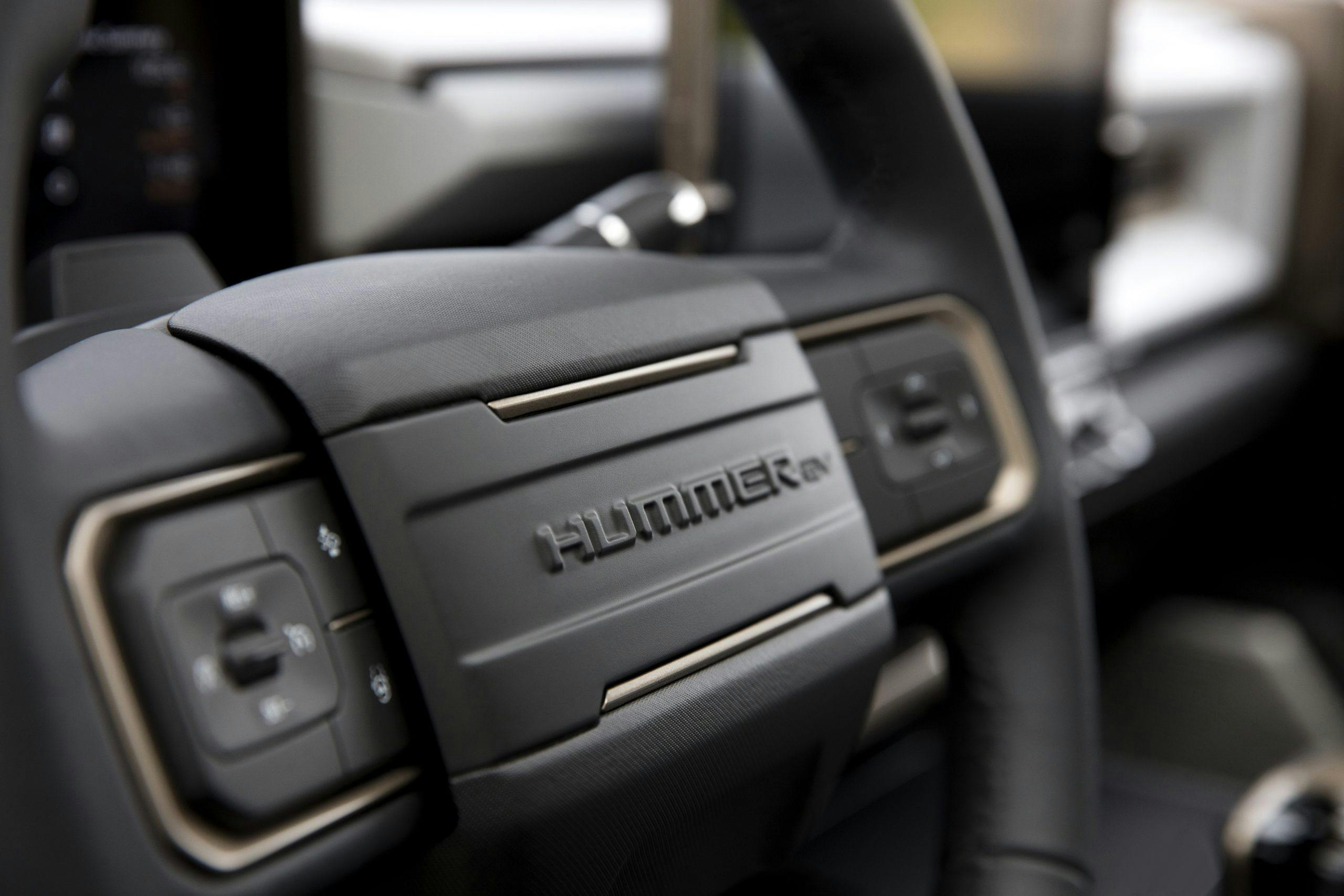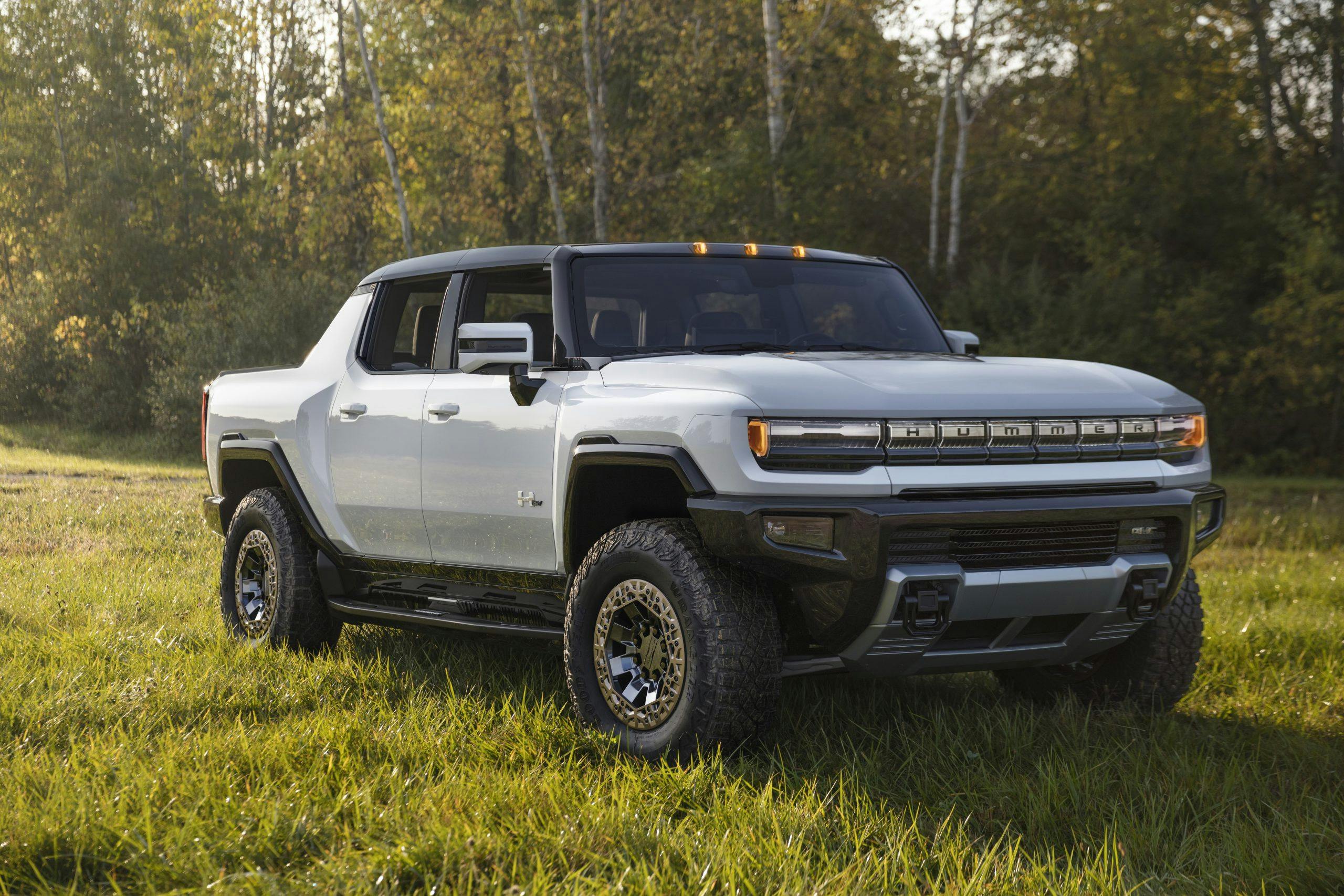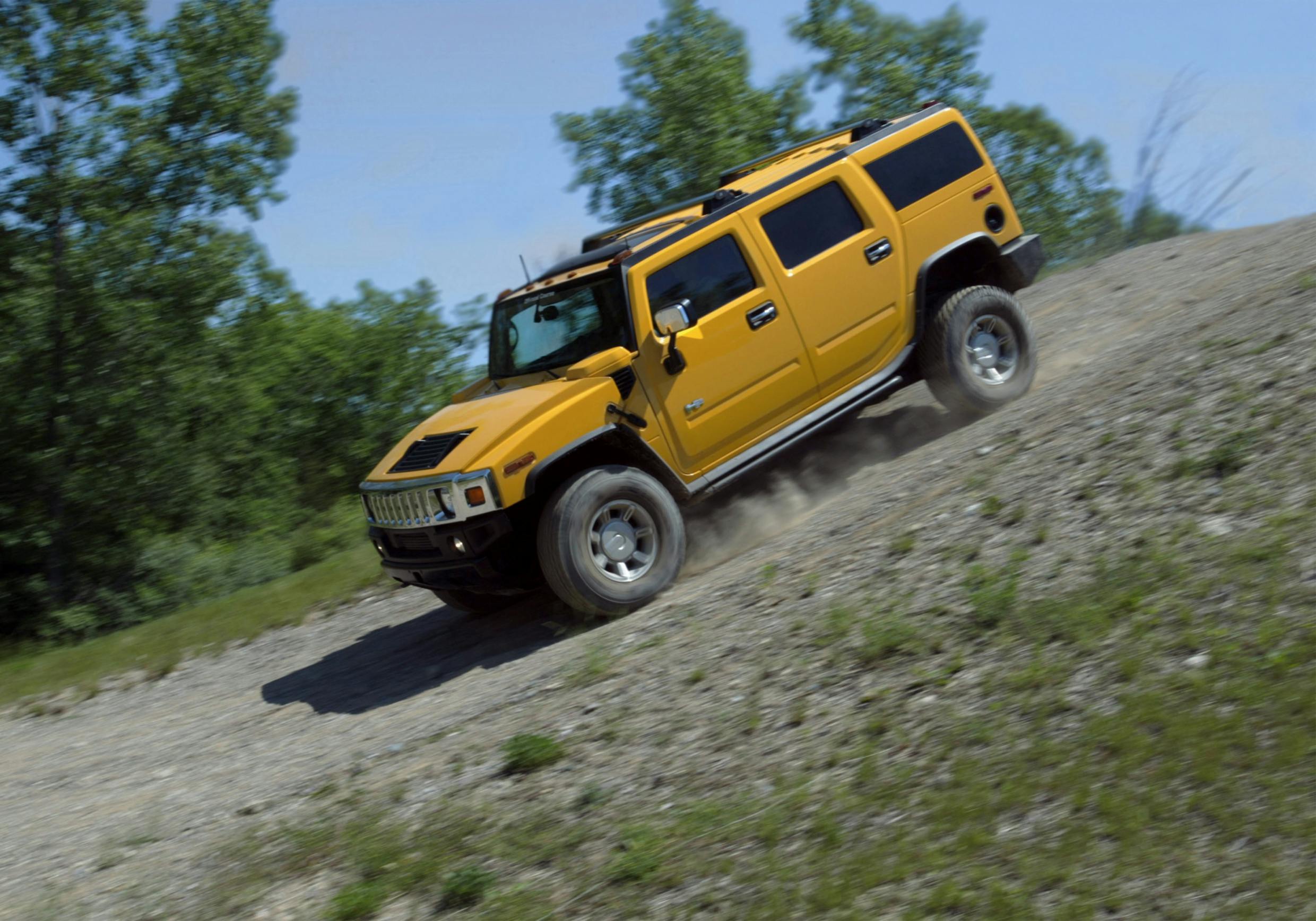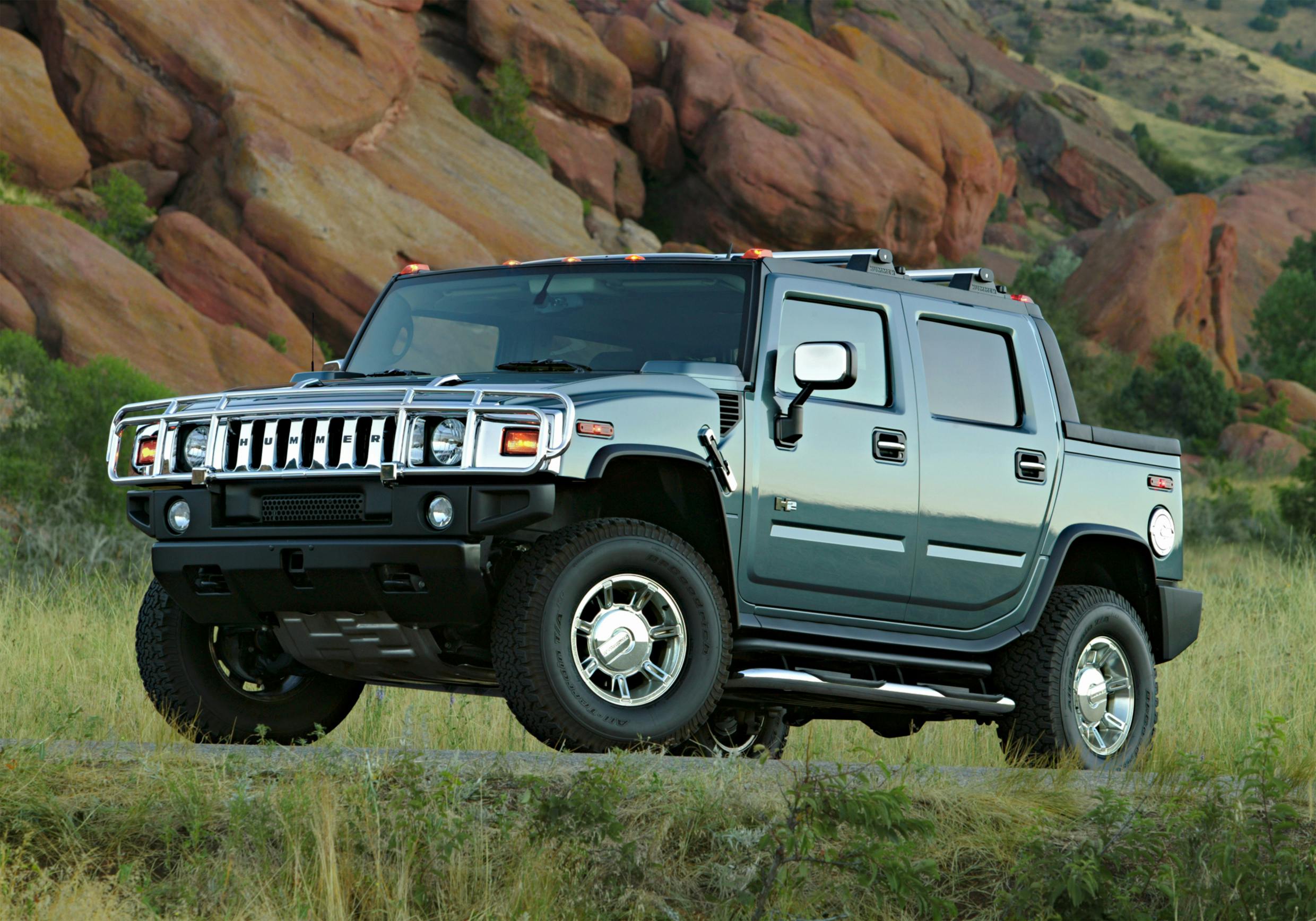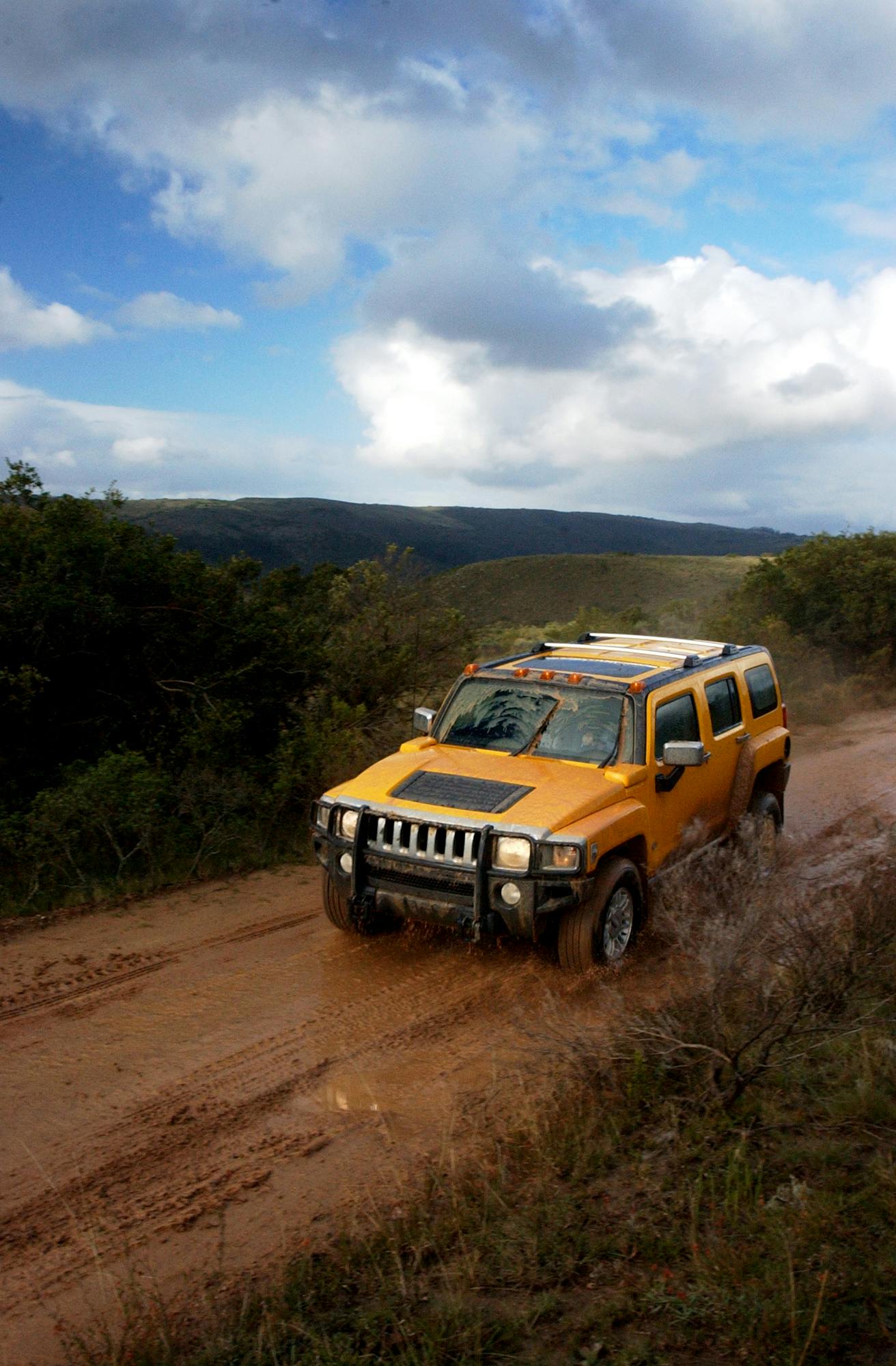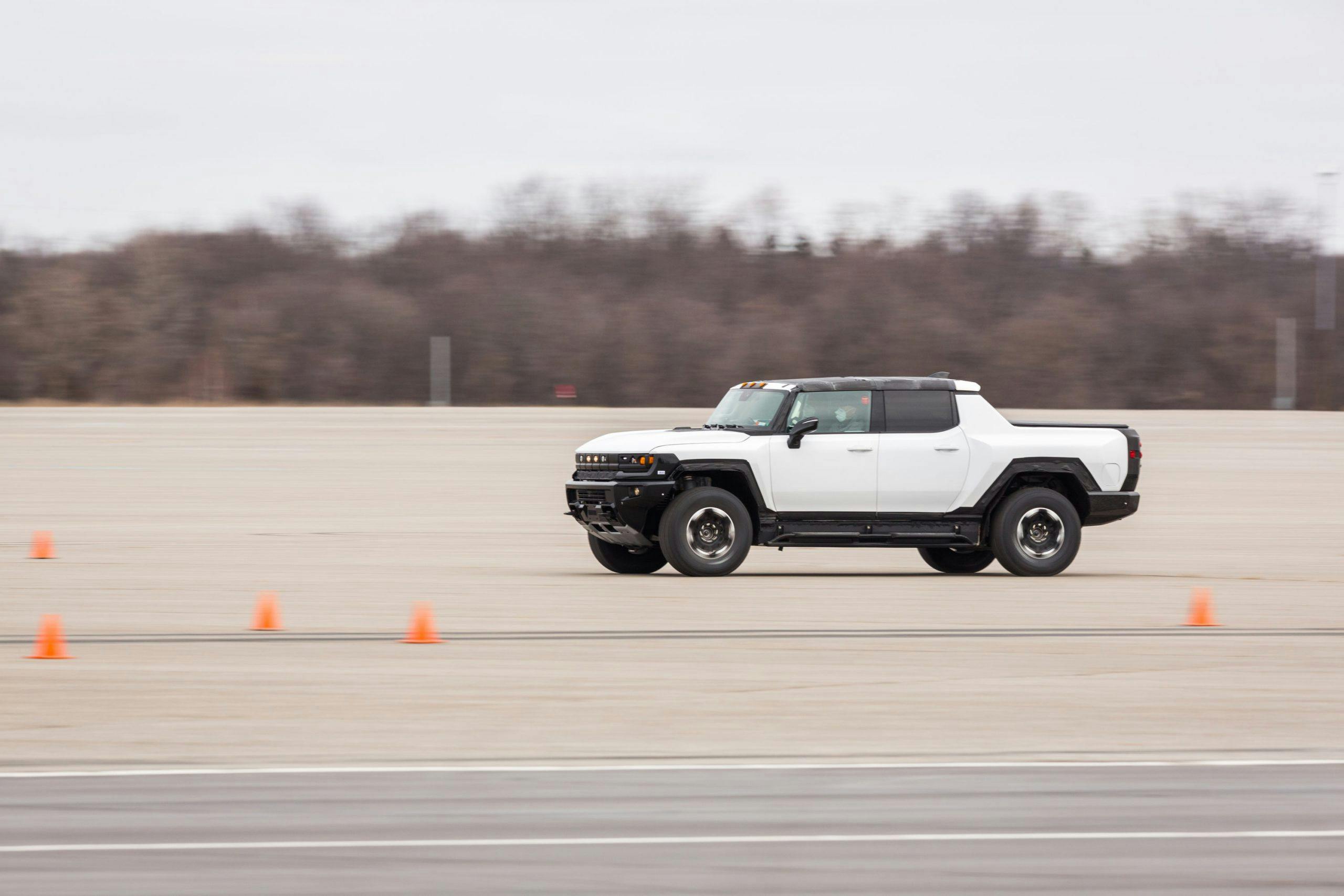Media | Articles
Hummer history: Where it came from (and where it’s heading)
Even hardcore sports car addicts acknowledge there are situations where only a Hummer will do. Say, when the day’s work is done and the back forty beckons for an hour of berm bouncing. Or when a left-lane creeper needs a full-mirror-visible suggestion to get the hell out of the way. When garage space appears and there’s no towing/hauling/camping/weather-beater in the fleet. Yes, Ford Broncos are sweet, but Hummers truly thrive at the apogee of SUV need.
Like many American icons, Hummers are rooted in military service. By the mid-1960s, it was clear that service Jeeps designed in the heat of World War II were due a serious rethink. The Army’s more versatile replacement was dubbed High Mobility Multipurpose Wheeled Vehicle—thankfully abbreviated HMMWV. Manufacturers as unlikely as Lamborghini vied for the contract to supply the new combination weapons carrier and recon vehicle.
Design specs were finalized in 1979 for an unstoppable combat vehicle with excellent on- and off-road performance, the ability to carry heavy and bulky payloads, and the guts to take a bullet without flinching. Though 61 companies nibbled at the bait, only three—American Motors’s subsidiary AM General, Chrysler Defense, and Continental—submitted working prototypes. Eleven experimental units were tested for over 600,000 miles in conditions ranging from deserts to arctic climes. The initial M998-series specs called for a 5200-pound curb weight, a 2500-pound payload, 16 inches of ground clearance, 5 feet of fording capability, both gas and diesel engines, and a three-speed automatic transmission. Prices started just over $200,000 and the production run eventually topped 280,000 units. They are likely to remain in some form of service—in disaster relief assistance roles, for example—until 2050 or beyond.
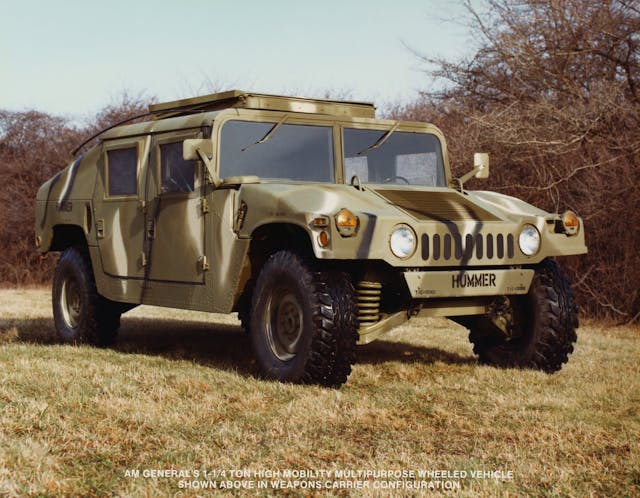
In 1983, AM General won the initial contract to supply 55,000 vehicles over five years. By 1995, more than 100,000 units had been built for U.S. and friendly foreign customers. In 1989, when the U.S. invaded Panama, Hummers tasted battle for the first time in Operation Just Cause. During the Gulf War, the need for greater protection from small arms fire became evident, resulting in the deployment of the M1114 with added armor, a more powerful turbocharged engine, air conditioning, and a tougher suspension. Added occupant protection consisted of hardened steel plating and bullet-resistant glass. During its distinguished career, the flexible Hummer platform has borne weapons ranging from machine gun turrets to surface-to-air missiles.

Following the September 11 terrorist attacks, Hummers were deployed to Afghanistan where they served well in spite of their vulnerability to Improvised Explosive Devices (IEDs). By 2007, the Marines had better luck with their Mine-Resistant, Ambush-Protected (MRAP) vehicles equipped with serious armor. By 2012, the Army deemed Hummers “no longer feasible for combat.”
Marketplace
Buy and sell classics with confidence
Hummer’s civilian life commenced in 1992 when AM General began offering H1s for sale to the public, the combined result of their high visibility role in Operation Desert Storm and support from actor Arnold Schwarzegger’s. From its launch to its showroom departure in 2006, the H1 offered a choice of three different Detroit Diesel V-8s, one Duramax V-8, and one GM gasoline V-8. These engines providing propulsion through a three- or four-speed automatic transmission, although the final model year offered a five-speed auto paired with the Duramax. The list of body styles included a four-door hard top, a wagon, a two-door pickup, a four-door “slantback,” and a soft-top convertible. With corners as crisp as a drill sergeant’s hat brim and barn-flat sides, the H1 prowled suburbs with authority.
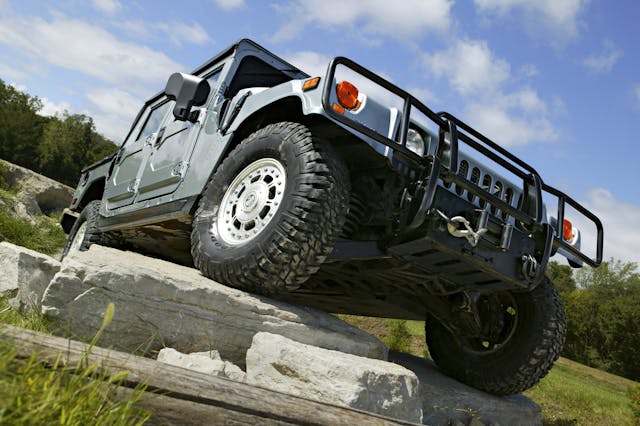
In 1999, GM purchased the Hummer brand outright from AM General and added two new variants for sale at GMC dealers. The H2 used full-sized pickup underpinnings while the smaller H3 borrowed chassis parts from GM’s Colorado/Canyon compact pickup. All had four doors and a choice of SUV or open bed-body styles. AM General manufactured H1s and H2s in Indiana while GM built H3s alongside Chevy Colorados at its Louisiana plant. The greater Hummer family was sold in 33 foreign countries via export or local manufacturing.

After a decade on the market under GM ownership, poor fuel efficiency and mediocre demand caught up with Hummers. Attempts to pawn off the brand in 2009 never panned out, so leftover stock was sold with deep discounts as GM wobbled into bankruptcy.
Rising like Lazarus

Following GM’s resurrection and raging customer interest in SUVs, the Hummer nameplate stashed in a back closet could turn out to be the General’s lucky stroke. Another godsend: a Detroit plant perfect for manufacturing the coming wave of electric trucks as well as the batteries needed to power them.
During UAW contract negotiations, GM threw its workers a bone by offering them a chance to build new electric Cadillacs, Chevrolets, and mysterious “M-brand” models. In late 2019, without decoding the M label, CEO Mary Barra acknowledged that GM would be selling the new family of electrics two years hence. During 2020 Super Bowl ads, NBA star LeBron James announced more details: that GMC dealers would sell a model labeled Hummer EV endowed with a remarkable 1000 hp. Chalk this up as the home team’s most aggressive response to Elon Musk’s auto industry disruption. The Detroit Free Press reports that 10,000 pre-orders are in already, and 1900 GMC dealers (about half) are planning to invest as much as $140,000 for the privilege of selling the Hummer EV.

Formerly called Detroit-Hamtramck Assembly, GM’s new factory ZERO will use 5G connectivity to expedite computer-to-machinery communication. Nearly 1000 workers stripped away walls, the roof, and obsolete machinery to refurbish this 4.1-million-square-foot, historically significant plant and 2200 workers will eventually be employed there. In lieu of a moving assembly line, vehicles will move via automated carts that rise on cue to ease assembly operations. GM’s Ultium lithium-ion pouch-style battery cells and packs will also be made here. The total investment in factory ZERO will top $2.2 billion.
First out of the box will be the 2022 Hummer EV Edition 1, starting at $112,595. This flagship will be equipped with every imaginable feature: three AC motors totaling 1000 hp, air suspension, four-wheel steering with in-phase (Crab Mode) and out-of-phase (for tighter turning) modes, two electronic dash screens, removable transparent roof panels, a stepped tailgate, and Super Cruise hands-free driving. An awesome 11,500 lb-ft of torque at the axles hustles this EV to 60 mph in a claimed three seconds flat. It will provide 15.9 in of ground clearance, five drive modes, 32 inches of fording capability, and 350 miles of driving range. The EV’s crew cab body with 5-foot open bed will be supplemented by an SUV later. Additional models with prices well below $100,000 will follow.
Whether this outrageous EV redefines the Hummer brand for a new age remains to be seen, but for now there appears to be sufficient demand for such a sideshow. Without disclosing exactly how many customers bought a $100 reservation, GM announced that its October 21, 2020, Hummer EV Edition 1 offering was sold out. In all likelihood, it’ll come to market well before the Tesla Cybertruck.









